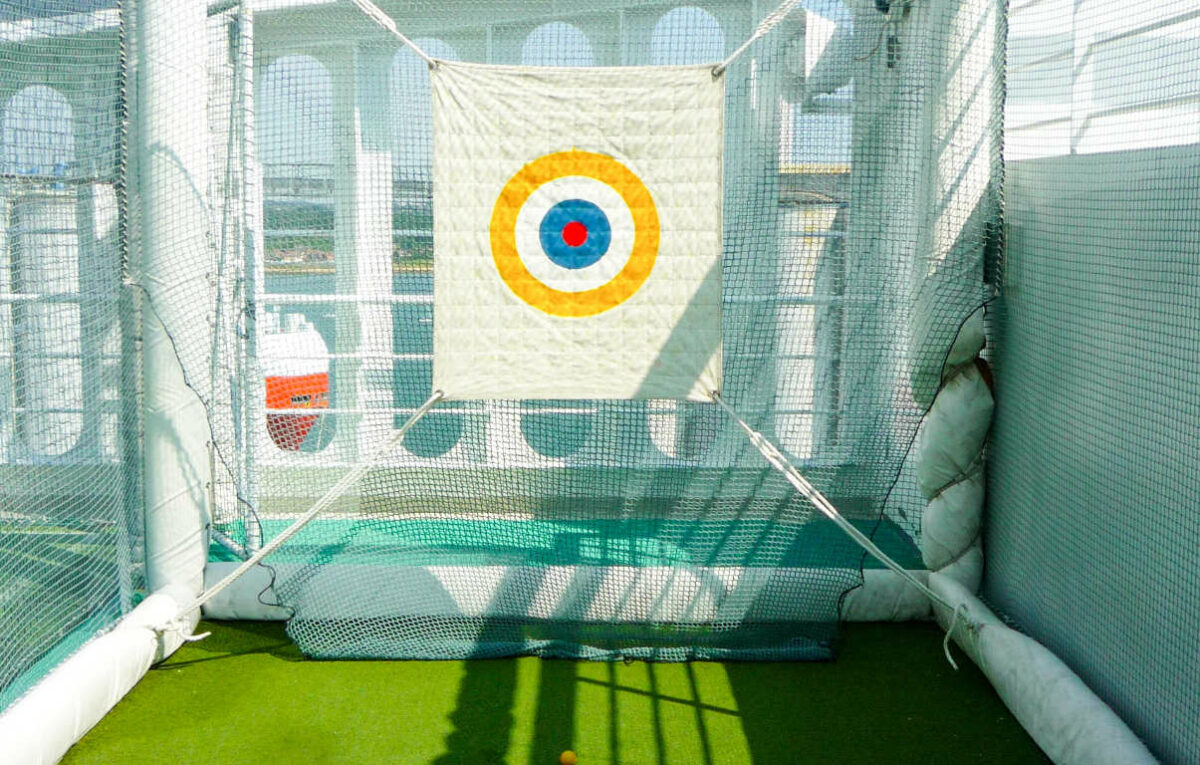Will a Tarp Stop a Golf Ball?
Golfers hitting shots in their backyard or on makeshift ranges often look for solutions to contain errant shots and stop balls from scattering.
Sturdy tarps seem like a potential option for stopping golf balls from blowing through or escaping. But will a standard tarp actually prevent golf balls from piercing through or sailing over?
Let’s examine how a tarp’s material, construction, and rigidity determine its golf ball-stopping power and see how you can effectively use a tarp for golf practice at home.

How Hard Do Golf Balls Hit Tarps?
First, to understand if a tarp can halt a golf ball, it helps to know how fast golf balls actually travel:
- Drivers and woods send balls screaming off clubfaces at 150-180 mph initially.
- Even iron shots reach speeds over 100 mph with forceful impacts.
- Wedges and short shots carry 60-80 mph of velocity on well-struck shots.
- Putts roll at a gentler 10-30 mph but still must be decelerated.
So even moderate shots place substantial force against a tarp. Preparing tarps to absorb and halt this energy is key.
Tarp Materials Matter
Tarps come in a range of materials including:
- Polyethylene – Lightweight with moderate durability.
- Canvas – Tougher but heavier cotton/poly blend.
- Vinyl/PVC – Water resistant but less pliable.
- Polyester – Lightweight fabric tarp material.
- Rubber – Durable and ultra-thick but heavy.
For stopping golf balls, thicker and more rigid materials like rubber, vinyl, and canvas perform better than lightweight poly tarps. This prevents balls from piercing through weaker materials.
Tarp Construction and Weave
Beyond material, the manufacturing quality and weave density also impact a tarp’s capacity to halt golf balls.
Well-constructed tarps with tight weaves have less space for balls to puncture through. But thinner and looser weave tarps allow balls to shoot through more easily.
Double-layered tarps or those with reinforcing inside provide extra security to absorb hits without puncturing.
So carefully inspect the tarp fiber density and construction quality before trusting it to stop balls.
Tarp Rigidity and Tautness
For a tarp to act as an effective golf ball barrier, it must be held tightly in place without sagging.
Tarps that are loose, sagging, or fluttering in the wind make it easier for balls to pierce through openings or bend the tarp to fly over the top.
Setting up a tarp barrier using poles, stands, or tie-downs pulls the fabric taut. This prevents the tarp from giving way under the force of impact.
The tighter the setup, the better the stopping performance.
Tarp Setup Tips
Here are some tips for constructing a tarp golf barrier:
- Use rigid poles or stands to mount the tarp, not flexible rods that can deflect on hits.
- Angle support poles outward slightly so the tarp remains fully stretched.
- Use wind-resistant tie-downs placed frequently to create tension.
- Leave some additional tarp fabric at the base to peg deep into the ground.
- Set the tarp at an angle to deflect shots rather than absorbing straight on.
- Add netting or secondary layers if needed to further halt balls.
Take the time to properly mount tarps for them to work as effective backstops.

When Tarps Work Best
Under the right conditions, some tarps can successfully stop golf balls:
- Rubber truck bed tarps are thick and rigid enough to decelerate balls.
- Well-mounted heavy canvas tarps absorb moderate chip shots.
- Angled setups deflect balls downward instead of direct impact.
- Low iron and wedge shots contain less force than drivers.
But for full power shots, most tarps require added precautions or alternatives.
Alternatives for Safer Golf Practice
While tarps work in some cases, safer options for containing practice shots include:
- Commercially designed net backstops built for golf.
- Hanging heavy blankets or quilts doubled up.
- Old mattresses can lean against a wall to cushion shots.
- Plywood or cardboard sheets also absorb impact.
- Practice nets like the Net Return automatically return balls.
The main goal is decelerating balls gradually while preventing ricochets. Purpose-designed golf nets or barriers do this most effectively.
Should You Use a Tarp for Golf?
Tarps can work to contain golf shots in limited situations, but come with risks:
- Balls piercing through tarps risk breaking objects or causing harm.
- Balls bouncing unpredictably off tarps redirect with force.
- Makeshift tarp setups can collapse when hit.
While tarps may seem a quick solution, invest in purpose-built nets or barriers for safe golf practice if routinely hitting balls. Take precautions and carefully assess tarp construction, rigidity, and mounting if using one temporarily.
With good preparation and an understanding of their limitations, tarps can serve as handy temporary ball barriers. But for frequent use, trust purpose-designed golf practice nets to safely halt shots without holes or ricochets.
